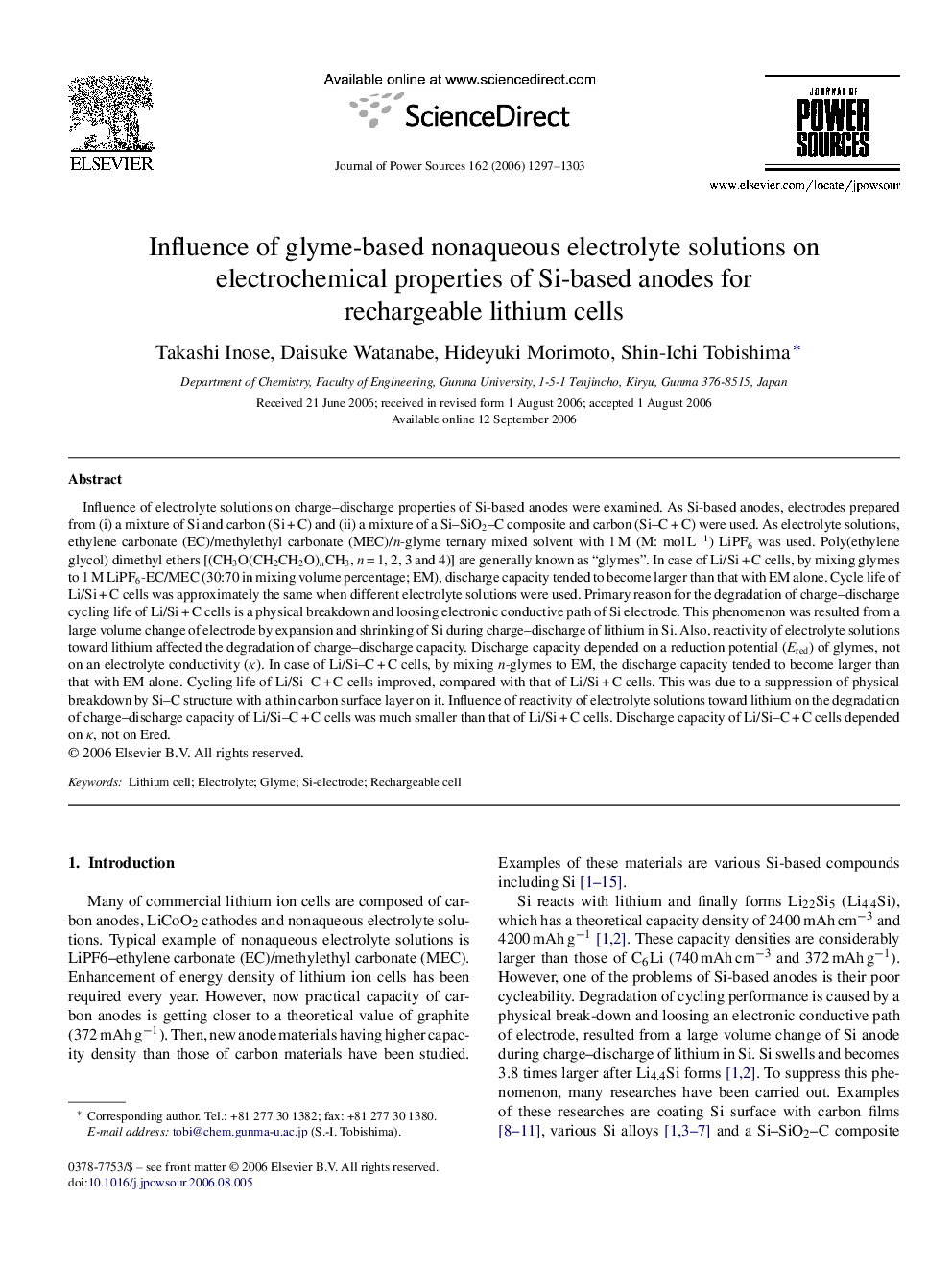| کد مقاله | کد نشریه | سال انتشار | مقاله انگلیسی | نسخه تمام متن |
|---|---|---|---|---|
| 1292507 | 973389 | 2006 | 7 صفحه PDF | دانلود رایگان |

Influence of electrolyte solutions on charge–discharge properties of Si-based anodes were examined. As Si-based anodes, electrodes prepared from (i) a mixture of Si and carbon (Si + C) and (ii) a mixture of a Si–SiO2–C composite and carbon (Si–C + C) were used. As electrolyte solutions, ethylene carbonate (EC)/methylethyl carbonate (MEC)/n-glyme ternary mixed solvent with 1 M (M: mol L−1) LiPF6 was used. Poly(ethylene glycol) dimethyl ethers [(CH3O(CH2CH2O)nCH3, n = 1, 2, 3 and 4)] are generally known as “glymes”. In case of Li/Si + C cells, by mixing glymes to 1 M LiPF6-EC/MEC (30:70 in mixing volume percentage; EM), discharge capacity tended to become larger than that with EM alone. Cycle life of Li/Si + C cells was approximately the same when different electrolyte solutions were used. Primary reason for the degradation of charge–discharge cycling life of Li/Si + C cells is a physical breakdown and loosing electronic conductive path of Si electrode. This phenomenon was resulted from a large volume change of electrode by expansion and shrinking of Si during charge–discharge of lithium in Si. Also, reactivity of electrolyte solutions toward lithium affected the degradation of charge–discharge capacity. Discharge capacity depended on a reduction potential (Ered) of glymes, not on an electrolyte conductivity (κ). In case of Li/Si–C + C cells, by mixing n-glymes to EM, the discharge capacity tended to become larger than that with EM alone. Cycling life of Li/Si–C + C cells improved, compared with that of Li/Si + C cells. This was due to a suppression of physical breakdown by Si–C structure with a thin carbon surface layer on it. Influence of reactivity of electrolyte solutions toward lithium on the degradation of charge–discharge capacity of Li/Si–C + C cells was much smaller than that of Li/Si + C cells. Discharge capacity of Li/Si–C + C cells depended on κ, not on Ered.
Journal: Journal of Power Sources - Volume 162, Issue 2, 22 November 2006, Pages 1297–1303